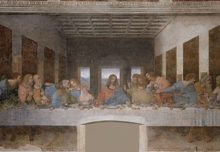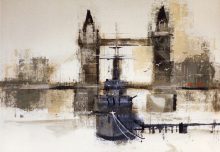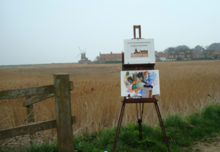GROUNDS for ART STUFF
This is not quite the same as ‘Grounds for Complaint’ or ‘Grounds for Divorce’.
Grounds for art stuff is a term used about the surface artists choose to paint on. It is not about the reasons or excuses that artists might use, that is a subject for another blog post.
So ‘grounds for art stuff’ refers to walls, canvas, paper, hardboard, sheet metal, glass, skin, cardboard boxes, etc.
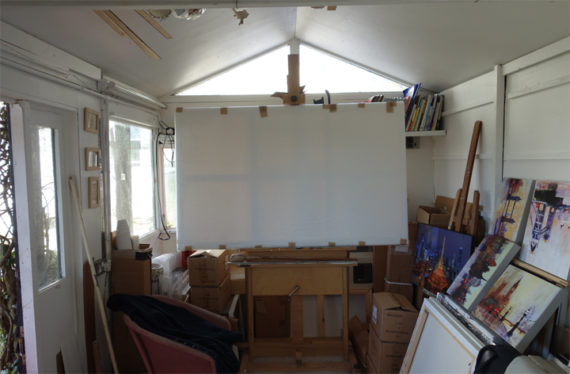
Big canvas, ready to start
Walls.
Walls. Painting onto wet plaster walls is called fresco. An old and the usual technique in the days when artists were part of the building trade. Paintings on walls can last a long time. Cavemen might have mixed pigment and blood to paint on cave walls. So the ground was actual ground.
Canvas.
Painting onto canvas means that the artwork can be moved. That in turn means that the artwork can be created elsewhere. Bingo… the artist’s studio!
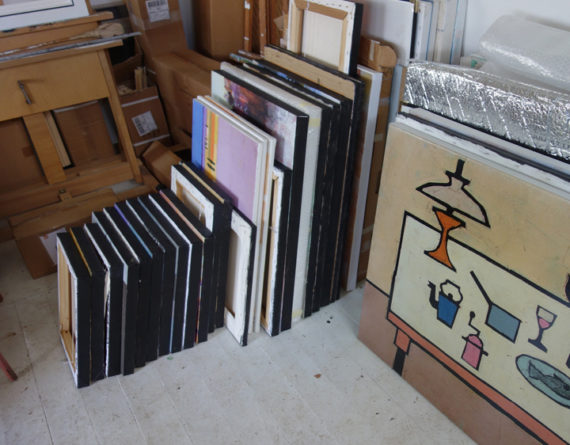
Canvases in studio
Paper.
Of course mankind had to invent paper first before this ground became possible. I guess that a few ‘artists’ of ancient times used vellum or other stuff that preceded paper. But there was no real market system for paper art until we invented books and printing presses. But paper as a ground was, and is, highly advantageous because it was and is very lightweight, and can be rolled up, and can be used in many new locations. Bingo… sketch books!
Hardboard.
Also called ‘masonite’, and also need not actually be hardboard because plywood, chipboard etc can be used just as well. This surface is a great substitute for canvas because it is stronger, cheaper, and harder. Stronger means that it doesn’t easily get damaged if you lean it against a corner of a box [personal experience here]. But you cannot roll it up and pop it into a tube like you can with canvas. Cheaper than canvas unless you make your own canvases out of sacking or old clothes. And harder which means that you can pile on the textures that would be impossible on a canvas. PS. Wooden panels made with joined up pieces of wood were an earlier attempt by artists and craftsmen to have a portable stronger surface than canvas. But they tended to warp and split. Plus they cost more than hardboard, plywood etc..
Sheet metal.
Some artists like to paint onto sheet aluminum or zinc etc. It is a tough as it gets, making flimsy paper, warpable canvas, splitable wooden panels, cheap hardboard seem like an inferior poor mans option. The problem here is that the metal surface is flat and there is no tooth. Tooth? You know, where there is a roughness that the paint can get in and behind, so that it doesn’t easily scrape off. Obviously canvas, hardboard paper etc have varying degrees of tooth. Paint sticks to the rough surface and buries itself in a bit as well. Okay, metal can use special paint that sticks like s**t to a blanket but it needs to be baked on, or it sends out horrible toxic fumes, or cost an arm and a leg. So metal is not my favourite surface, even though it is very strong.
Glass.
Blimey you thought metal was flat and hard to stick to! But glass is worse. And it breaks. So painting onto glass is not very usual, but it can be quite good in the right circumstances. In a window is an instance. Or in front of something else where the picture or view behind is part of the artwork.
Skin.
We are getting into extremes here. Some artists will create art by painting bodies. Their own or someone else. Then of course you can take photos and create prints that are interesting because the painting is on something interesting. Not my cup of tea.
Cardboard.
This category is included to pay homage to Alfred Wallis the Cornish artist who showed us that the ground was the least of an artists criteria. Thanks Alfred.
See Wikepedia quote ‘Having little money, Wallis improvised with materials, mostly painting on cardboard ripped from packing boxes and using a limited palette of paint bought from ships’ chandlers.”
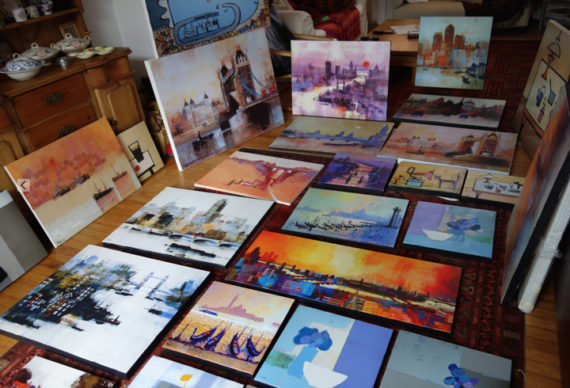
Canvases before show
Conclusion.
You might want to refresh your basic understanding about what art is by peeking at my previous blogs about ‘kinds of paint’, and ‘kinds of artist’s tools’. Then, with this blog about ‘grounds’ you will have a glimpse into the three constituent parts of a painting. These parts influence what the painting will look like, how long it will last, how big and heavy it will be, and many other factors. And an artist has to choose these things before he or she starts to make the art. Onward and upward.


